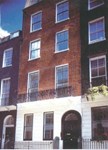Certification
• All ivory objects that qualify for one of the exemptions will need a certificate before sale.
• Exemption certificates for items deemed to be ‘of outstandingly high artistic, cultural or historical value’ will in effect become passports valid each time the item is sold. This is different to the proposals for those objects qualifying under the ‘de minimis’ rule (pre-1947 items with ivory content less than 10%). In these cases a registration certificate is valid only for a single change of ownership.
Import/export
• The term ’dealing in ivory’ includes importing or exporting it from the UK for sale. It will thus not be possible to move prohibited items across borders.
Items of outstandingly high artistic, cultural or historical value
• Precisely what is meant by a pre-1918 item ‘of outstandingly high artistic, cultural or historical value’ is yet to be seen. However, the object chosen to illustrate this point was a 13th century Gothic era carving of the crucified Christ from the Victoria and Albert Museum. The guidance says both (a) the rarity of the item and (b) the extent to which the item is an important example of its type, will be taken into account with ‘assessments subject to detailed criteria … to be issued in due course’.
Acquisitions by qualifying museums
• A clause in the law allows for the sale of otherwise prohibited items to accredited museums. It says these sales (subject to more general CITES rules on ivory) may be carried out by ‘a private individual, group of individuals or an organisation’. It allows for the possibility that, for example, an Art Deco bronze and ivory figure c.1925 with an ivory content of over 10% could be sold to a museum.
Read ATG's guide to the UK ivory ban














